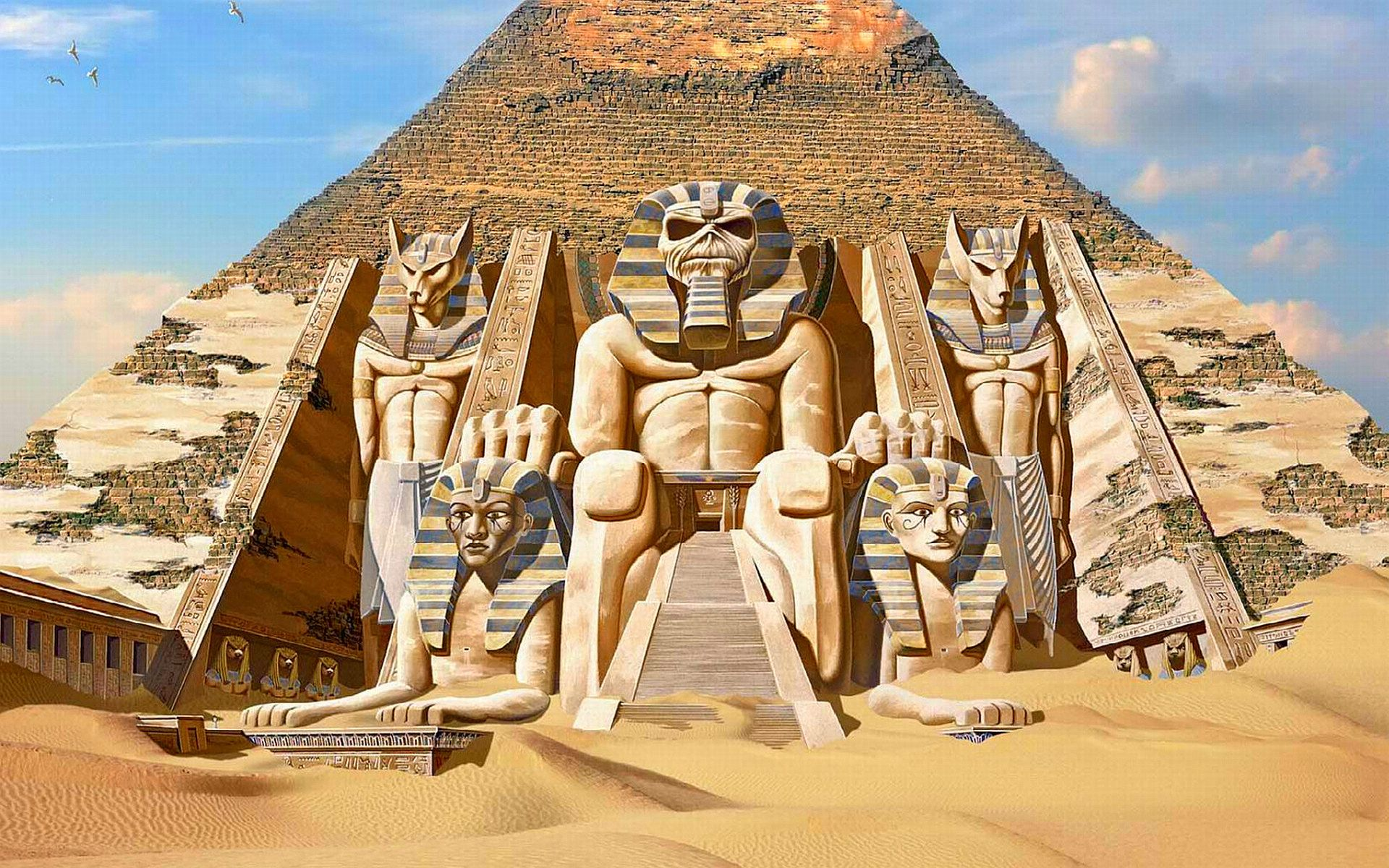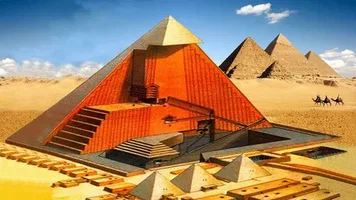The Egyptian desert, a vast expanse of arid land stretching far beyond the iconic Nile River, holds secrets that have fascinated archaeologists, historians, and adventurers for centuries. Beneath its golden sands lie incredible treasures that offer hidden glimpses into the lost civilizations of ancient Egypt. These civilizations, once thriving along the edges of the desert, left behind a rich cultural heritage that continues to reveal itself in remarkable ways.
From forgotten tombs and ancient temples to hidden cities and intricate artifacts, the Egyptian desert is a gateway to understanding the grandeur and complexity of the ancient world. Let’s take a journey through this enigmatic landscape and explore the incredible treasures it holds.
One of the most significant discoveries in the Egyptian desert is the ancient city of Tanis, often referred to as the “Egyptian Atlantis.” Once a thriving capital in the Delta region, Tanis was a center of power during the 21st and 22nd dynasties. However, over time, it was forgotten and buried under layers of sand, only to be rediscovered by archaeologists in the 19th century.

Excavations in Tanis revealed temples, royal tombs, and a wealth of artifacts, including exquisite gold and silver treasures that rivaled those found in the tomb of Tutankhamun. The discovery of Tanis offered an unprecedented glimpse into the lives of the Pharaohs who ruled during Egypt’s Third Intermediate Period and underscored the importance of the desert in preserving ancient history.
### 2. **Valley of the Kings: A Royal Resting Place**
The Valley of the Kings, located in the desert near Luxor, is perhaps one of the most famous archaeological sites in Egypt. This desert valley was chosen by the Pharaohs of the New Kingdom as their final resting place, and it is here that the tombs of great rulers, including Ramses II and Tutankhamun, were discovered.

The dry desert climate helped preserve these tombs for millennia, safeguarding intricate wall paintings, hieroglyphics, and valuable treasures. The discovery of King Tutankhamun’s tomb in 1922 by Howard Carter remains one of the most significant archaeological finds in history, providing insight into the opulence and grandeur of ancient Egyptian royalty.
### 3. **The Great Sphinx of Giza: Guardian of the Desert**
The Great Sphinx of Giza, an enormous limestone statue with the body of a lion and the head of a Pharaoh, has stood guard over the Egyptian desert for more than 4,500 years. This iconic monument, believed to represent the Pharaoh Khafre, is a symbol of ancient Egyptian power and mystery.
Over the centuries, the Sphinx has been partially buried by sand, only to be uncovered again through excavation efforts. Its enigmatic gaze continues to captivate visitors, and many believe the Sphinx holds the key to unlocking further secrets hidden beneath the desert sands. The Giza Plateau, where the Sphinx resides, is also home to the Great Pyramids, making it a treasure trove of ancient wonders.
### 4. **The Temple of Abu Simbel: A Monument to Power**
The Temple of Abu Simbel, located in the southern desert of Egypt near the border with Sudan, is a magnificent monument built by Pharaoh Ramses II. Carved into the cliffs of the Nubian Desert, this temple is a testament to the architectural brilliance of the ancient Egyptians.
The temple’s four colossal statues of Ramses II greet visitors as they approach, symbolizing the Pharaoh’s power and divinity. Hidden for centuries under the sands of the desert, the temple was rediscovered in the 19th century and later moved to higher ground in the 1960s to save it from flooding during the construction of the Aswan High Dam.
Abu Simbel offers a rare glimpse into the grandeur of ancient Egyptian temple design and the role of religion and politics in the culture of the time.
### 5. **The Western Desert Oases: A Glimpse into Ancient Trade Routes**
Egypt’s Western Desert is home to a series of oases that served as vital trade routes and stopping points for caravans traveling through the vast expanse of sand. These oases, such as Siwa, Bahariya, and Dakhla, have revealed incredible archaeological finds, including temples, tombs, and entire cities that once flourished in the desert.
The Siwa Oasis, for example, is famous for the Oracle of Amun, where Alexander the Great is said to have consulted the gods during his conquest of Egypt. The Bahariya Oasis, on the other hand, is known for the discovery of the Golden Mummies—a collection of beautifully preserved mummies that highlight the importance of the oases in ancient Egyptian culture.
### 6. **The Black Desert and White Desert: Nature’s Own Treasures**
While much of the focus in the Egyptian desert is on the man-made treasures, the natural landscapes themselves are treasures to behold. The Black Desert, with its volcanic rock formations, and the White Desert, with its surreal chalk formations, offer a glimpse into Egypt’s geological history.
These otherworldly landscapes provide not only a stunning backdrop for archaeological exploration but also serve as a reminder of the power of nature to shape the environment. The unique beauty of these deserts has made them popular destinations for travelers seeking to experience Egypt’s natural wonders.
### 7. **The Pyramids of the Fayoum: Forgotten Relics**
The Fayoum Oasis, located southwest of Cairo, is home to several lesser-known pyramids that date back to the Middle Kingdom. These pyramids, built for Pharaohs such as Senusret II and Amenemhat III, are often overshadowed by the more famous pyramids of Giza, but they offer valuable insights into the evolution of pyramid construction.
The Fayoum pyramids, partially buried by sand and eroded by time, have revealed ancient burial practices and intricate designs that shed light on the culture and beliefs of the Middle Kingdom period. The Fayoum region itself is a rich agricultural area, providing a contrast between the desert and the fertile lands of the Nile.
### 8. **The Tombs of Saqqara: An Ancient Necropolis**
Saqqara, located in the desert near Cairo, is one of the most important archaeological sites in Egypt. This ancient necropolis served as the burial ground for the capital of Memphis and is home to the Step Pyramid of Djoser—the first pyramid ever constructed.
Excavations in Saqqara have uncovered an array of tombs, statues, and mummies, offering a detailed glimpse into the funerary practices and beliefs of ancient Egypt. The discovery of well-preserved artifacts in this desert location has made Saqqara an invaluable source of information about the Old Kingdom.
### 9. **The Eastern Desert: Ancient Quarries and Trade Routes**
The Eastern Desert, stretching between the Nile River and the Red Sea, was a critical region for ancient Egyptian trade and resource extraction. This desert is home to numerous ancient quarries, where the Egyptians mined for valuable stones such as granite, alabaster, and gold.
Exploring the remains of these quarries, as well as the ancient roads that once connected Egypt to the Red Sea and beyond, provides a glimpse into the economic and industrial power of ancient Egypt. The remnants of mining settlements, temples, and fortifications in the Eastern Desert offer a unique perspective on the empire’s reach and wealth.
### 10. **Uncovering the Future: Ongoing Discoveries in the Desert**
While many of the treasures of the Egyptian desert have already been uncovered, ongoing archaeological work continues to reveal new finds. The harsh environment of the desert has preserved much of Egypt’s ancient history, and each year brings new discoveries that shed light on previously unknown aspects of the civilization.
With advancements in technology, including satellite imagery and ground-penetrating radar, archaeologists are uncovering previously hidden sites deep within the desert sands. The future of desert exploration promises even more incredible treasures, offering a deeper understanding of ancient Egypt’s cultural heritage.
The Egyptian desert is a treasure trove of ancient history, waiting to be explored. From forgotten cities and temples to hidden tombs and natural wonders, this vast and mysterious landscape offers a unique glimpse into the civilizations that once thrived along its borders. Each discovery adds to our understanding of Egypt’s cultural heritage, preserving the legacy of one of the most influential civilizations in human history.





